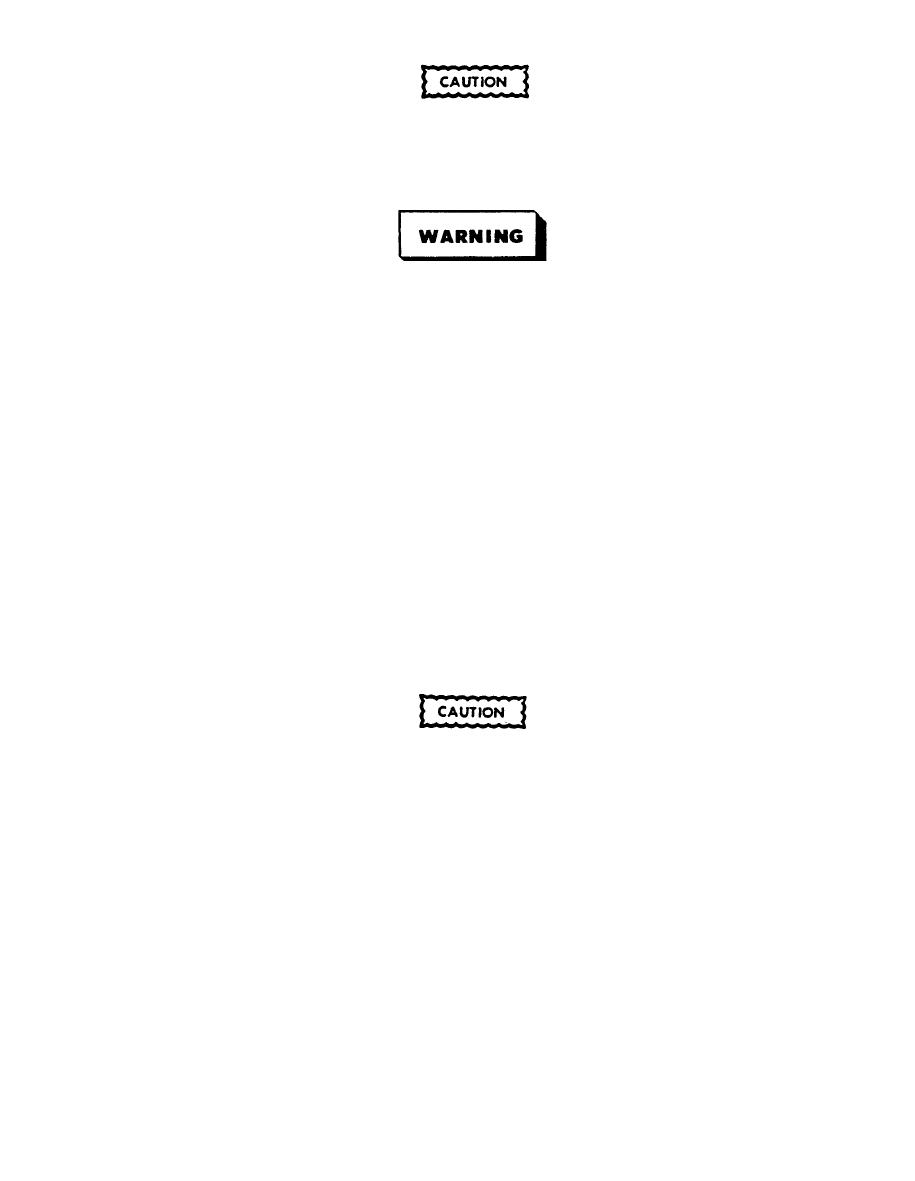

Custom Search
|
|

|
||
 To avoid internal damage to equipment, use only synthetic sponges
when cleaning internal surfaces and components. Do not use cloth
rags or cotton waste.
(3) Thoroughly clean bearing chambers and oil reservoirs.
Do not use gasoline, kerosene, or other low flashpoint solvents. A
serious explosion may result.
(4) Flush out complete lubricating system with flushing oil.
(5) Inspect oil pumps for corrosion, erosion, and wear.
(6) Remove tube bundles from oil coolers, if applicable, and
thoroughly clean tubes.
(7) Ensure closure of all drain valves, reinstallation of plugs,
and reinstallation of sump covers.
(8) Refill lubricating oil reservoirs to proper level.
(9) Remove tag from controls.
(10) Follow procedures for startup provided in paragraph 2.2.
7.2 Alignment. Alignment of the unit may be checked with a dial indicator.
Refer to specific installation manual for applicable tolerances. To align the
coupling, perform the following procedure.
To ensure proper alignment, check alignment in both the hot and cold
condition. After checking the alignment in the cold condition,
operate the compressor under full load for 1 hour. Shut down the
unit and recheck the alignment immediately.
NOTE
When using the dial indicator, make sure the compressor shaft end
play is held constant in one direction.
(a) Attach indicator bracket to compressor hub of coupling. Figure 3-6
illustrates two methods of attaching the indicator mounting bracket to the
coupling.
3-10
|
 |
|
 |
||